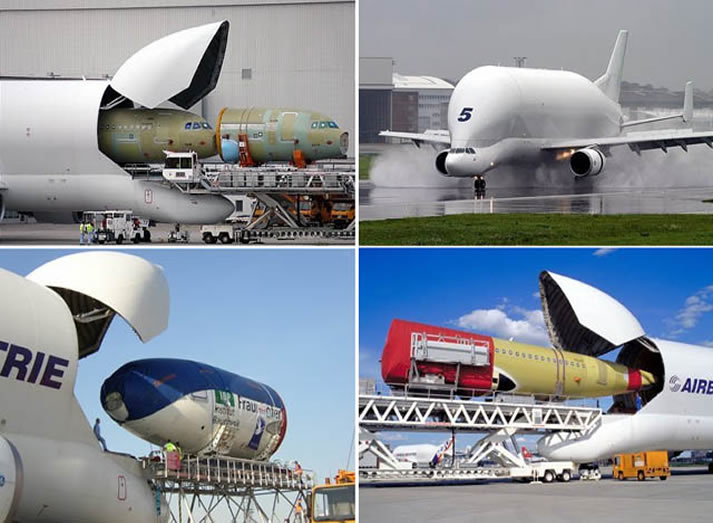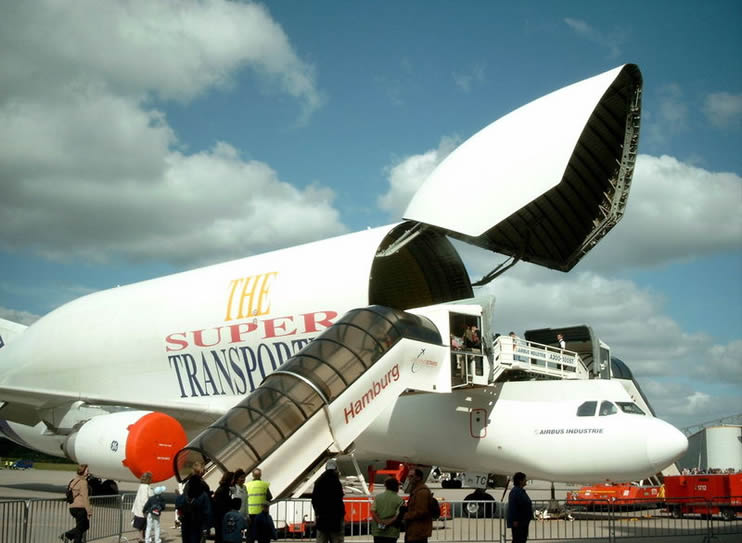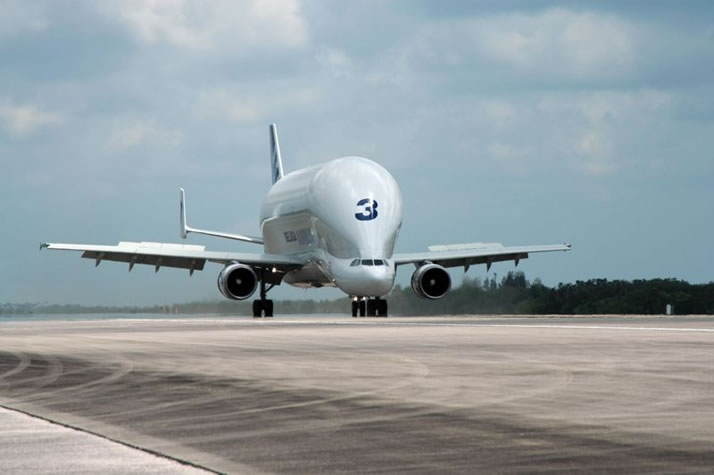AIRBUS A300-600ST (SUPER TRANSPORTER) BELUGA
(SUPER GUPPY) AIRCRAFT HISTORY FACTS AND PICTURES

The Airbus A300-600ST (Super Transporter) or Beluga is a version of the standard A300-600 wide-body airliner modified to carry aircraft parts and over-sized or awkward cargo.It was officially called the Super Transporter at first, but the name Beluga became popular and has now been officially adopted. Several major aircraft manufacturers are multinational, and it is not unusual for them to have plants in widely separated locations. Airbus, however, is unique in that it was a consortium formed by the major French, British, German, and Spanish aerospace companies, and the geographic location of Airbus manufacturing is not merely a matter of cost and convenience, it is also a matter of history, national interest and pride. In consequence, each of the Airbus partners makes an entire aircraft section, which needs to be transported to a central location for final assembly. The details vary from one model to another, but the general arrangement is for the wings and landing gear to be made in the UK, the tail and doors in Spain, the fuselage in Germany, and the nose and center-section in France; all being assembled in either Toulouse, France or Hamburg, Germany.
When Airbus started in 1970, the first few components were delivered by road, but growing production soon necessitated a switch to air transport. From 1972 onwards, a fleet of four highly modified "Super Guppies" took over. These were former Boeing Stratocruisers from the 1940s, converted with custom fuselages and turbine engines to carry large volume loads for the 1960s NASA space program, leading to the jibe that 'every Airbus is delivered on the wings of a Boeing'. As time went by, the Super Guppies grew increasingly unsatisfactory for Airbus's ferrying needs: their age meant that operating expenses were high and ever-increasing, and growing Airbus production required greater capacity.
In 1991 Aérospatiale and DASA, two of the major Airbus partners, formed a company to develop a replacement. The starting point was the design for the wide-body twin-engined Airbus A300: the wings, engines, landing gear, and the lower part of the fuselage are the same as the A300 while the upper part of the fuselage is an enormous horseshoe-shaped structure 7.7 m (25.3 ft) in diameter. To provide access to the cargo area from the front without having to disconnect all electrical, hydraulic and flight control connections (not to mention the lengthy recalibrations before each flight the reconnection entailed), the standard A300 cockpit was moved down below the cargo floor level and a 17 m (55.8 ft)-high cargo door fitted. Finally, the tail structure was enlarged and strengthened to maintain directional stability.
Construction began in September 1992, and the first flight took place in September 1994. After 335 hours of test flying, certification was awarded in September 1995, and the A300-600ST "Beluga" entered service. Four more Belugas were constructed, at a rate of roughly one per year, and all five remain in regular service. Their primary task is to carry Airbus components ready for final assembly across Europe to Toulouse or Hamburg, but they are also available for charter work, and have been used to carry a variety of special loads, including space station components, large, very delicate artwork, industrial machinery, and entire helicopters. (One Beluga was chartered to carry two complete NHI NH90s and a Eurocopter Tiger from Europe to Australia and back). The A300-600ST's freight compartment is 7.4 m (24.3 ft) in diameter and 37.7 m (123.7 ft) long; maximum payload is 47 tons. At 153.9 tons its maximum take-off weight is comparable to a normal A300, showing that the Beluga was intended for large but relatively light cargo.
The main deck cargo volume of the Beluga is greater than that of the C-5 Galaxy or the Antonov An-124. |
© AviationExplorer.com - The Website For Aviation Enthusiasts |







